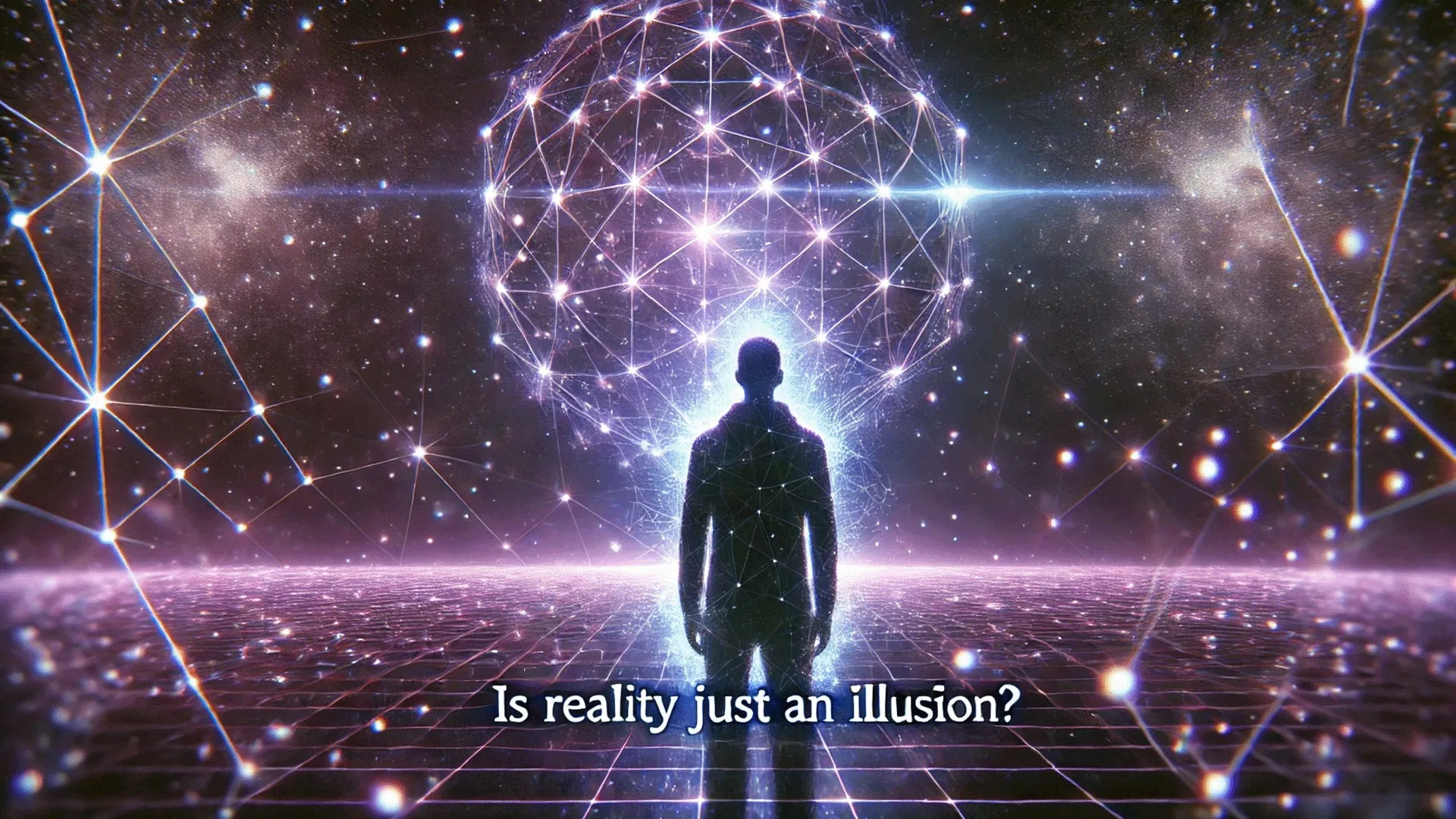Introduction: Imagine a world where the universe is not a vast expanse of stars, galaxies, and cosmic dust, but a complex holographic projection
Introduction: Imagine a world where the universe is not a vast expanse of stars, galaxies, and cosmic dust, but a complex holographic projection with each part containing the essence of the whole. What if the human mind, consciousness, and paranormal phenomena like telepathy or out-of-body experiences are not mystical outliers but integral pieces of this puzzle? Such questions formed the core of Michael Talbot’s groundbreaking work, The Holographic Universe, which has inspired thinkers and researchers worldwide to reconsider the very fabric of existence.
In this article, we dive into the holographic model of reality, exploring its roots, implications for psychic phenomena, and how it intersects with human consciousness. We also reflect on Talbot’s mysterious life and untimely death, pondering whether his insights were suppressed or simply a coincidence of fate.
The Holographic Model: Understanding Reality Beyond Perception The holographic universe theory suggests that what we perceive as reality is akin to a hologram—a three-dimensional projection created from two-dimensional interference patterns. Every fragment of a holographic image contains information about the whole image, a principle that radically alters our understanding of the universe and consciousness itself.
1. The Foundation of Holographic Theory
The idea that the universe could function like a hologram was proposed by David Bohm, a physicist and protégé of Albert Einstein, and Karl Pribram, a neurophysiologist at Stanford University. Bohm’s work on quantum physics suggested that at a subatomic level, particles were not independent but part of an interconnected web. Pribram, studying memory, found that the brain operates in a manner similar to holography, storing information in a way that each part reflects the entirety of stored memories.
Bohm and Pribram’s work combined to present a surprising hypothesis: the universe itself might be a holographic projection. Talbot took this theory and expanded it, exploring its implications not only for physics and neuroscience but for consciousness and paranormal phenomena.
2. The Malleability of Reality
Talbot proposed that reality is far more fluid and interconnected than we perceive. Unlike the conventional view of the universe as a fixed and rigid structure, the holographic model suggests that reality is shaped by consciousness and is inherently malleable. In this view, concepts like telepathy, precognitive dreams, and psychokinesis are not anomalies but evidence of the interconnected nature of existence.
One of the most striking characteristics of a hologram is that each part contains the whole. This implies that within us, if we can access it, is the entire universe—every atom, cell, and neuron in our head potentially holds the knowledge of the cosmos.
3. Quantum Entanglement and the Illusion of Separation
A key piece of evidence for the holographic universe theory comes from quantum entanglement. When two particles, such as electrons, become entangled, a change to one will instantaneously affect the other, regardless of the distance separating them. This “spooky action at a distance,” as Einstein called it, defies classical physics but fits perfectly within the holographic model, where space and separation are mere illusions.
In Talbot’s words, if the universe operates holographically, then there is no real distance between entangled particles—they are simply manifestations of a deeper, indivisible reality. This could explain the shared sensations sometimes reported by twins or the mysterious outcomes of psychic phenomena.
4. Personal Experiences: A Glimpse Beyond the Veil
Talbot’s fascination with the holographic model was fueled by personal experiences that transcended ordinary explanations. As a child, he experienced an out-of-body experience and lived in a home rife with poltergeist activity. Objects would inexplicably move, and unexplainable phenomena would occur, piquing his lifelong interest in understanding the true nature of reality.
These experiences, along with numerous reports from individuals who had near-death experiences (NDEs), formed a foundation for Talbot’s theories. People who had been clinically declared dead frequently recounted experiences in an alternate reality defined by energy and frequency—terms eerily reminiscent of the descriptions found in the holographic model.
Send emails, automate marketing, monetize content – in one place
Holographic Consciousness: The Bridge to Psychic Phenomena Talbot argued that if reality is holographic, then human consciousness is not confined to the brain but interconnected with this deeper level of existence. The implications are profound: our minds could theoretically access information stored throughout the holographic field, allowing for telepathy and other psychic phenomena.
5. The Mind’s Influence on the Body: The Power of Belief
The placebo effect is perhaps the most accessible example of the mind influencing the body. Talbot recounted the story of a man diagnosed with terminal cancer who made a miraculous recovery after receiving what he believed to be an experimental drug. When the man learned the drug was ineffective, his cancer returned. This story underscores the holographic idea that reality is shaped by our beliefs and perceptions.
Conversely, the “nocebo effect,” where negative beliefs can lead to detrimental health outcomes, shows the mind’s power to manifest both health and illness. In England, an experiment revealed that 30% of cancer patients given a placebo chemotherapy treatment experienced hair loss, purely due to their expectation of the drug’s side effects.
Paranormal Phenomena Explained In Talbot’s view, phenomena such as telekinesis, poltergeists, and lucid dreams can be better understood when seen through the lens of the holographic model. Bohm suggested that the mind and matter are not separate entities but part of a single, indivisible whole. In this framework, moving an object with one’s mind (psychokinesis) does not involve sending energy from the brain to the object but is instead a manifestation of the interconnectedness between subject and object.
6. Lucid Dreams and Near-Death Experiences
The idea that consciousness can traverse beyond the physical realm is also supported by studies on lucid dreaming and near-death experiences. Kenneth Ring, a researcher at the University of Connecticut, found that many people who experienced NDEs described a higher state of reality where thoughts could materialize instantaneously.
These descriptions align with the holographic model, suggesting that consciousness can access other planes of existence more fluid and responsive than our daily reality. Similarly, in lucid dreams, individuals can manipulate their environment at will, indicating a closer proximity to this deeper reality where the projection is more directly influenced by consciousness.
7. Poltergeist Activity: A Mirror of Emotional States
Talbot’s own experiences with poltergeist activity revealed that these manifestations were often linked to his emotional state. When in high spirits, the activity was light-hearted; during periods of stress, it turned more severe. This correlation underscores the holographic model’s premise: consciousness and external reality are not separate, but intimately connected.
The Mystical and the Scientific: Bridging the Gap Many ancient spiritual traditions have long held that reality is an interconnected web. For example, the Hindu concept of Maya views the material world as an illusion, a projection masking a more profound truth. Talbot saw parallels between these spiritual beliefs and the holographic model, suggesting that mystics have been accessing the holographic nature of reality for centuries.
The Untimely Death of Michael Talbot Michael Talbot’s death in 1992, only a year after the publication of The Holographic Universe, adds a layer of intrigue to his legacy. Officially, he died of lymphoma, but conspiracy theories have emerged, speculating whether his research posed a threat to established scientific paradigms or certain influential groups. Though these claims remain speculative, Talbot’s work continues to inspire a deeper examination of consciousness and reality.
Conclusion: The Legacy of Michael Talbot and the Holographic Universe The Holographic Universe remains a seminal work for those searching for answers beyond the conventional understanding of reality. It invites us to question the solidity of our existence, explore the power of consciousness, and embrace the interconnectedness of all things. While Talbot’s life and career were cut short, his insights encourage us to delve deeper into our own potential and challenge the boundaries between science and mysticism.
Through his writing, Talbot has left a legacy that beckons us to look beyond the shadows of Plato’s Cave and glimpse the true nature of our holographic reality—a universe where consciousness shapes reality, and the impossible becomes a tangible part of our experience.
Send emails, automate marketing, monetize content – in one place


